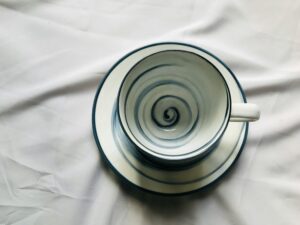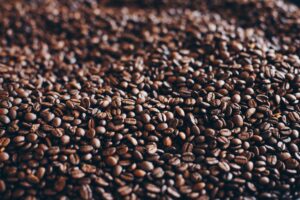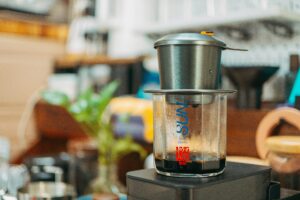Coffee is more than just a morning ritual—it’s a world of flavors, aromas, and textures shaped by everything from the bean’s origin to how it’s roasted. Among the most important aspects of coffee is its roast profile. Whether you prefer a light, medium, or dark roast, the roasting process dramatically impacts flavor, caffeine content, and overall drinking experience. Yet many coffee lovers still find themselves wondering: what exactly do these roast levels mean? And how do they affect what ends up in your cup?
Table of Contents
In this guide, we’ll break down the science and art of roasting, explain the differences between light and dark roast coffee, and help you choose the roast profile that best matches your taste preferences and brewing style.
What Is Coffee Roasting?
Coffee beans start out as green seeds inside the coffee cherry. In their raw state, they are dense, grassy, and undrinkable. Roasting is the process of applying heat to these green beans to transform them chemically and physically into the aromatic, flavorful coffee we know and love.
During roasting, beans go through a series of stages that include drying, browning, first crack, and (for darker roasts) second crack. These stages bring out different flavor compounds and determine whether the coffee will lean toward bright acidity or bold smokiness.
The Role of Heat in Roasting
Roasting isn’t just about browning the beans—it’s about carefully controlling time and temperature. Too little heat and the coffee tastes grassy and underdeveloped. Too much heat and it becomes flat or burnt. Professional roasters use precise temperature control to highlight a bean’s natural flavors while balancing sweetness, acidity, and body.

Understanding Roast Levels
Roast levels are generally divided into four main categories: light, medium, medium-dark, and dark. Each roast profile has its own unique qualities.
Light Roast
Light roasts are roasted just long enough to reach the first crack. The beans are light brown in color and often have no visible oils on the surface.
- Flavor Profile: Bright, acidic, and fruity. Light roasts highlight the bean’s origin characteristics, such as citrus, berry, or floral notes.
- Caffeine Content: Contrary to popular belief, light roasts actually retain slightly more caffeine than darker roasts because they spend less time in the roaster.
- Best Brewing Methods: Pour-over, Chemex, and Aeropress. These methods showcase the nuanced flavors of light roasts.
Medium Roast
Medium roasts strike a balance between acidity and body. The beans are medium-brown and may begin to show a slight sheen of oils.
- Flavor Profile: Balanced flavor with notes of caramel, chocolate, and mild fruitiness. The acidity is softer compared to light roasts.
- Caffeine Content: Slightly less than light roast, but the difference is minimal.
- Best Brewing Methods: Drip coffee makers, French press, and pour-over.
Medium-Dark Roast
These roasts go beyond the first crack and approach the second crack. The beans are darker brown with some visible oils.
- Flavor Profile: Rich, bold, with notes of dark chocolate, nuts, and spices. Acidity is low, while bitterness and body increase.
- Caffeine Content: Slightly lower than light and medium roasts, but still strong enough to provide a solid boost.
- Best Brewing Methods: Espresso, moka pot, and French press.
Dark Roast
Dark roasts are roasted through the second crack or beyond. The beans are dark brown to almost black, shiny with oils.
- Flavor Profile: Smoky, roasted, and bittersweet. Origin flavors are muted, and roast characteristics dominate.
- Caffeine Content: Dark roasts have the least caffeine by volume, but the difference compared to lighter roasts is smaller than most people think.
- Best Brewing Methods: Espresso, cold brew, and milk-based drinks like lattes and cappuccinos.
Light vs Dark Roast: Key Differences
Flavor
- Light Roast: Bright, fruity, floral, acidic. Best for appreciating bean origin.
- Dark Roast: Bold, smoky, chocolaty, and less acidic.
Body
- Light Roast: Lighter body, tea-like texture.
- Dark Roast: Heavier, richer body with a thicker mouthfeel.
Acidity
- Light Roast: High acidity, often described as “lively” or “sparkling.”
- Dark Roast: Low acidity, smoother but sometimes bitter.
Caffeine
- Light Roast: Slightly higher caffeine per bean.
- Dark Roast: Slightly lower caffeine, but denser packing when measured by weight.
Aroma
- Light Roast: Fruity, floral, herbal.
- Dark Roast: Toasted, smoky, nutty, earthy.
The Myth About Caffeine and Roast
A common misconception is that dark roast has more caffeine because of its bold taste. In reality, caffeine levels don’t change drastically during roasting. Light roasts may retain a bit more caffeine per bean, but because dark beans are less dense, a scoop of dark roast may actually contain more beans—and therefore similar caffeine levels. The difference is small, so your choice should focus on flavor, not caffeine content.
How Roast Impacts Brewing
The roast level also determines how the coffee behaves in different brewing methods.
Light Roast Brewing
Because light roasts are denser, they require more heat and longer extraction times. They shine in manual brewing methods that allow precision and highlight delicate flavors.
Dark Roast Brewing
Dark roasts extract more quickly due to their porous structure. They are ideal for espresso, where the bold flavors cut through milk, or for cold brew, where the smoky notes mellow into smooth sweetness.

Roast Profiles and Coffee Origins
Another factor to consider is how roast interacts with coffee origin. For example:
- Ethiopian beans often shine at lighter roasts, bringing out floral and citrus notes.
- Colombian beans are versatile, working well from light to medium-dark roasts.
- Sumatran beans are usually roasted dark to emphasize earthy, chocolatey notes.
Roast is not just about personal preference—it’s about finding the balance that best showcases a bean’s natural characteristics.
Choosing the Right Roast for You
So how do you choose between light and dark roast coffee?
If You Like Bright and Fruity Flavors
Go for light roasts. These are best if you enjoy exploring the unique origin characteristics of coffee.
If You Like Bold and Strong Coffee
Opt for dark roasts. They deliver a smoky, full-bodied flavor that pairs well with milk and sugar.
If You Want Balance
Medium and medium-dark roasts offer a middle ground, providing both complexity and richness without being overly acidic or bitter.
Roast Trends in 2025
Coffee trends in 2025 show a growing preference for light to medium roasts, especially among specialty coffee drinkers who value transparency and origin flavors. However, dark roasts remain popular for espresso lovers and those who enjoy a classic, bold cup.
Roasters are also experimenting with profile roasting, where they fine-tune heat curves to bring out the best in each bean rather than sticking to strict roast categories. This trend allows coffee lovers to experience even more variety and nuance.
Tips for Exploring Roast Profiles
- Try the same bean roasted at different levels to understand how roast changes flavor.
- Use brewing methods that complement the roast level.
- Keep an open mind—your preferences may shift over time as your palate develops.
- Buy freshly roasted beans to experience the full spectrum of flavors.
Final Thoughts
Understanding coffee roast profiles is key to becoming a more informed and adventurous coffee drinker. Light roasts highlight the bean’s unique origins with bright and fruity flavors, while dark roasts emphasize richness and boldness. Medium roasts sit comfortably in between, offering balance and versatility.
At the end of the day, there’s no “better” roast—it’s all about your taste preferences and how you enjoy your coffee. Whether you’re savoring a delicate Ethiopian light roast or a smoky Italian-style dark roast, the magic lies in exploring and finding what excites your palate.
Coffee is a journey, and roast profiles are one of the most important stops along the way. By decoding light and dark roasts, you not only improve your brewing skills but also open the door to a deeper appreciation of coffee as both a science and an art.






